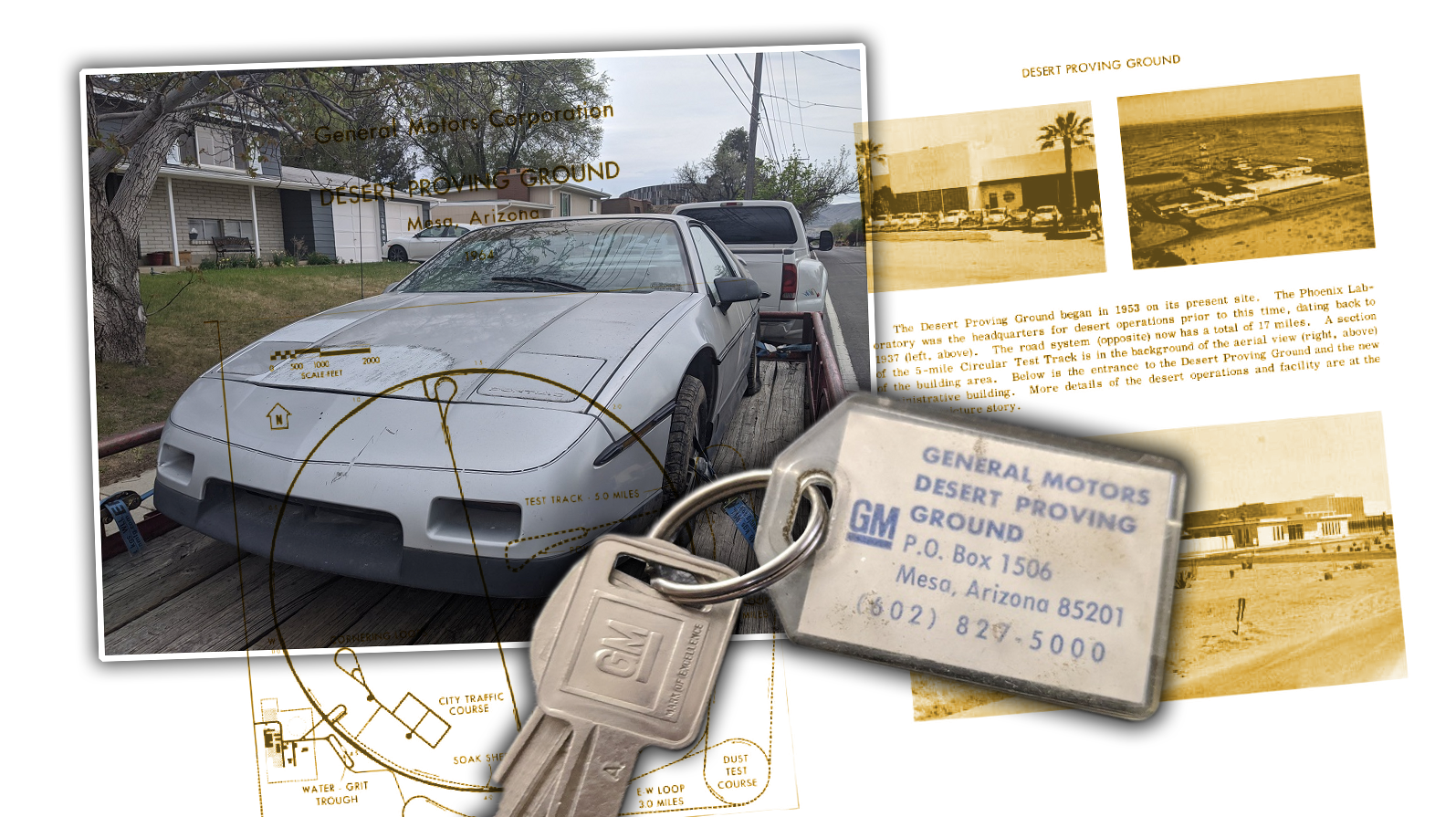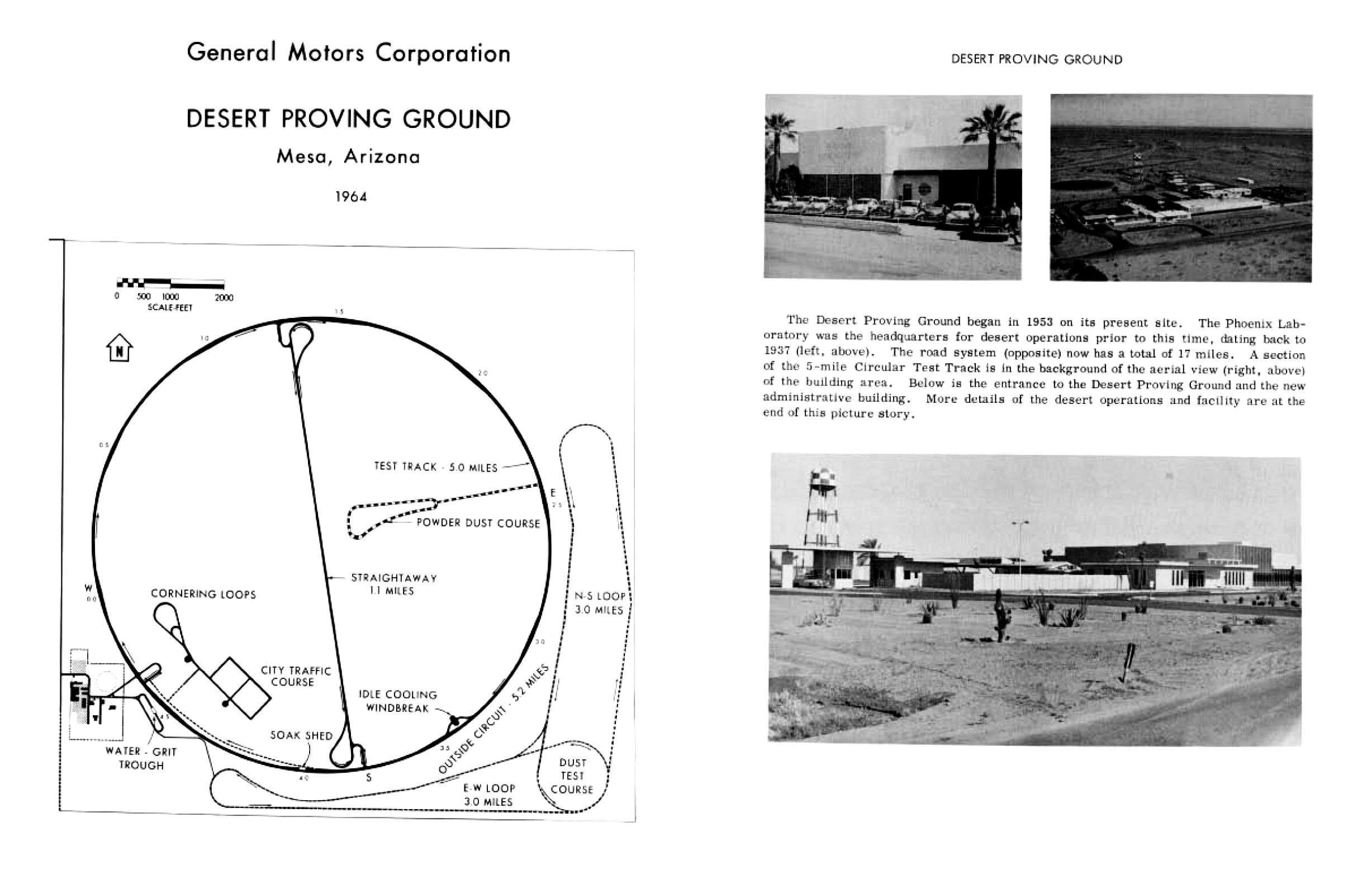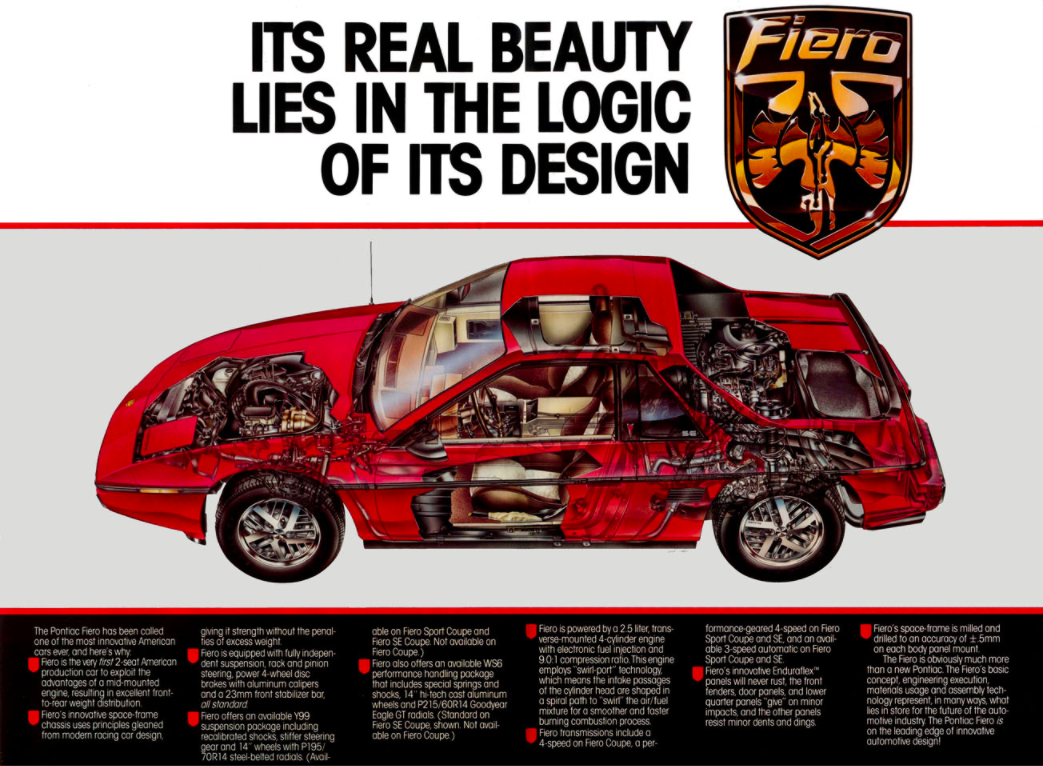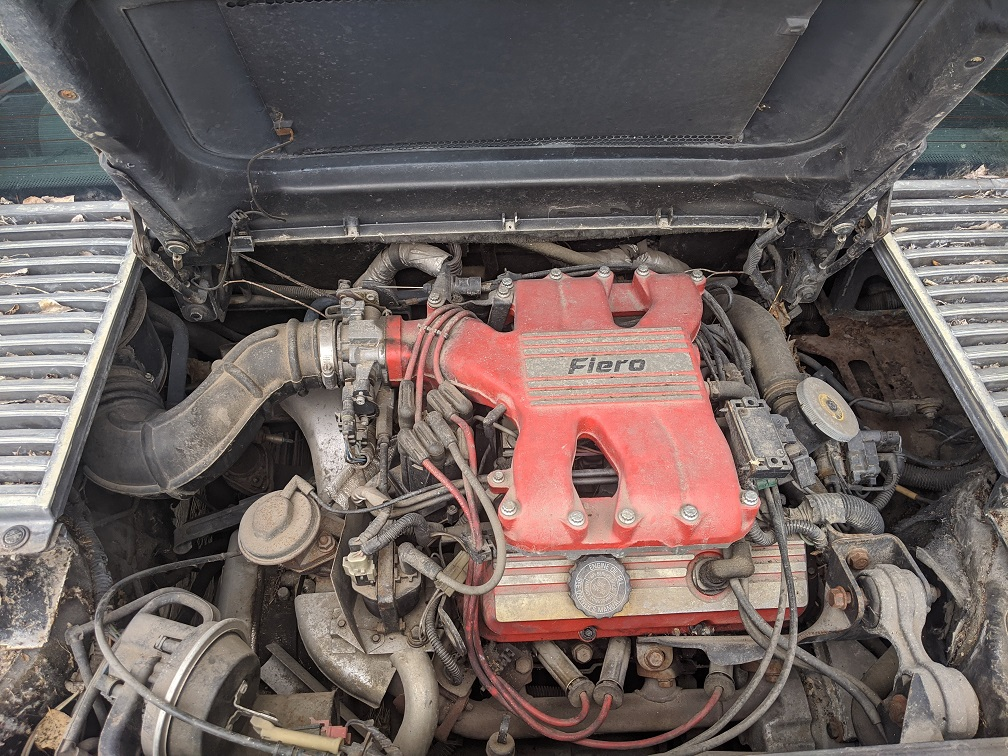This $400 Junkyard Pontiac Fiero Was Once Used At GM's Desert Proving Ground And I'm Obsessed
Chantay Osborne and her husband Phil Jensen were at a junkyard in Utah looking for a parts car for their 1985 Pontiac Fiero GT. What they discovered, and subsequently purchased for the low price of $400, was a vehicle with a mysterious, but fascinating history—one that I became a bit obsessed with. So get ready to descend into the deep rabbit hole of GM history.
Utah-based Jalopnik readers Chantay Osborne and Phil Jensen are true car enthusiasts. Between the two of them is a car collection consisting of a 1967 Pontiac Firebird, 1971 Oldsmobile Cutlass, 1974 VW Super Beetle, 1993 Jeep Cherokee, 1995 Mazda Miata M-Edition, 2003 Pontiac Vibe GT, and 1985 Pontiac Fiero GT. (Plus some "newer more boring stuff.")
The last car on that list, a beautiful yellow 1985 Fiero GT (shown below), is in need of some replacement components, so Chantay and her husband went out to a junkyard in late April with hopes to buy a parts car. They ended up finding an interesting one.
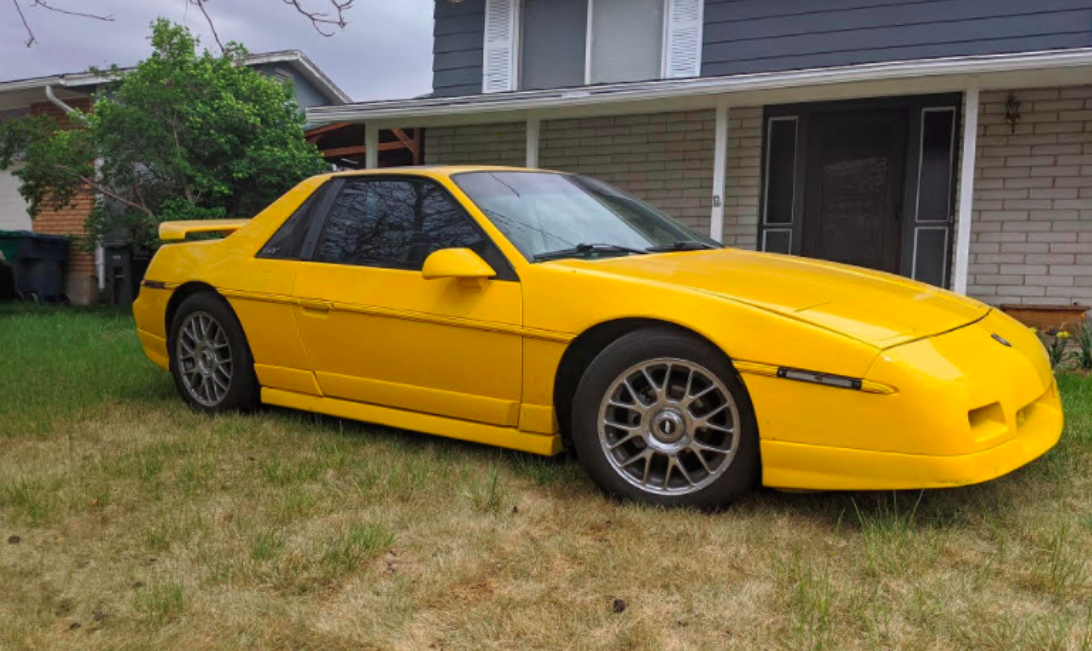
"We were planning on getting a donor Fiero so we could drop the cradle out of my 85 GT and replace it with a cradle rebuilt with a shiny new engine and transmission," Chantay told me via email. "We snagged a totally complete 1986 SE out of a junkyard for $400, but once we got it home we noticed the tag on the keys was from the GM Desert Proving Ground in Mesa, and on the back was a description of the car." Here's a look at the keys:
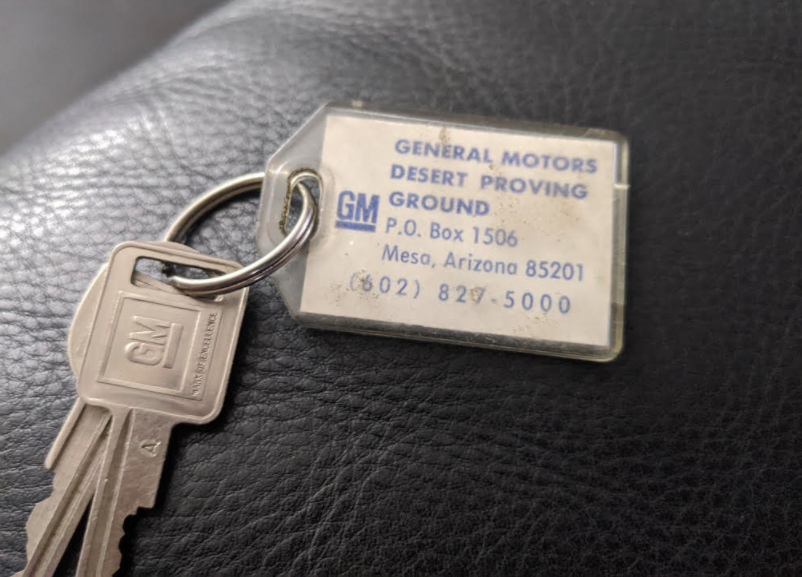
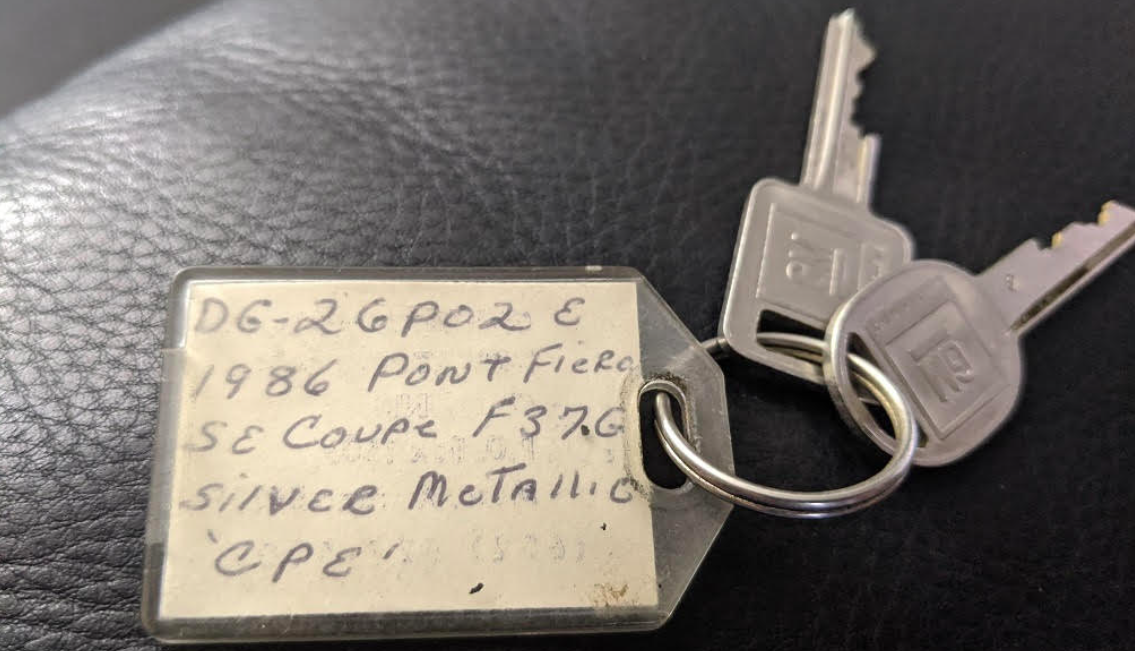
Those keychains alone make it pretty clear that the vehicle must have been used in some capacity at the General Motors proving ground in Mesa. But I couldn't be 100 percent sure. Perhaps someone had thrown that keychain on a regular, dealer-bought Fiero, thinking it was a cool bit of GM history that would compliment the car?
I had to find out, because it was eating me alive. The idea that someone found what could be a former engineering development car at a junkyard for $400 got my nerdy-engineer blood rushing.
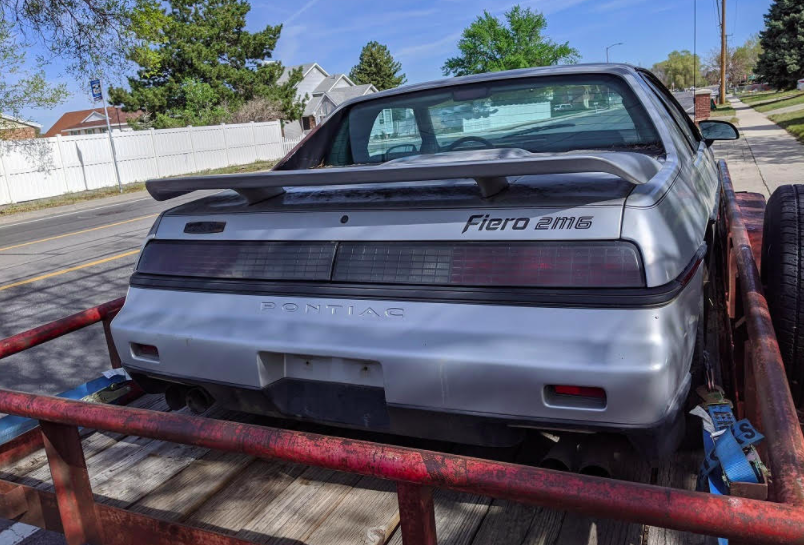
To find out this vehicle's provenance, I reached out to the General Motors Heritage Center, which told me it couldn't get any information on the vehicle's history, since VIN-related information for pre-1987 vehicles is now in private hands. Specifically, the heritage center told me, that info is owned by PHS Automotive Services, Inc., who charges $85 to get the following:
A copy of the factory invoice or billing history card for your 1961-86 Pontiac.
A letter decoding the options (where necessary).
A copy of the dealer order form for that year.
Other specific information for that year and model Pontiac (where available).
I was keen on getting that third item, because if this was a GM engineering development car, that order form should show that the vehicle had been shipped to GM, and not to a regular dealership. So in my excitement, I dropped $100 to get this information expedited to me via email.
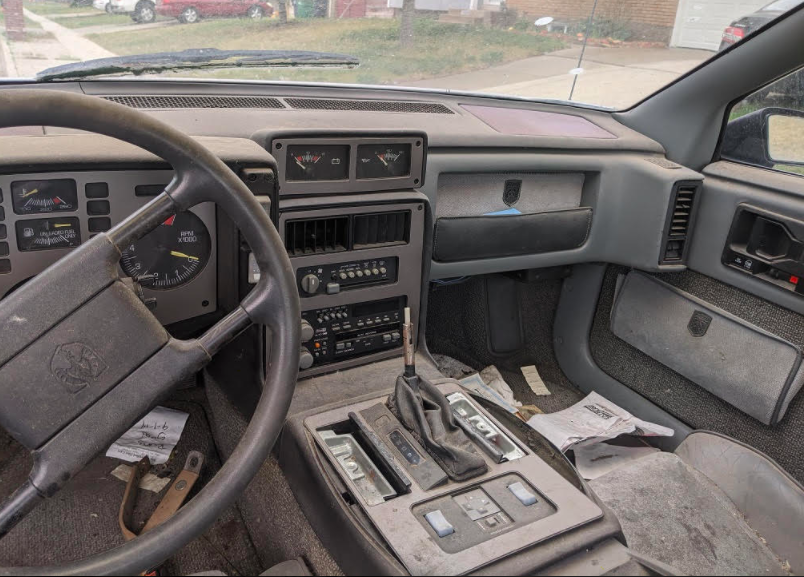
As I awaited the documents, I asked Chantay to look around the car to see if she could find any papers that might help us learn more about the vehicle she'd purchased. She discovered a bill-of-sale that had her questioning whether the car had been used at the proving ground.
"In the trunk under some of the more gross stuff was the old bill of sale," she wrote me. "Looks like it was sold new to [an owner] in 1986, so I doubt it was even a GM shuttle car. If you can cancel your PHS report, you should. I don't know what the deal is with the plastic proving ground keychain..."
Here's a look at the bill of sale, which states that the car was sold new to an individual (whose name I blocked out). I couldn't confirm if this individual worked at GM, but the bill of sale definitely makes it seem like a regular dealer sale in Utah.
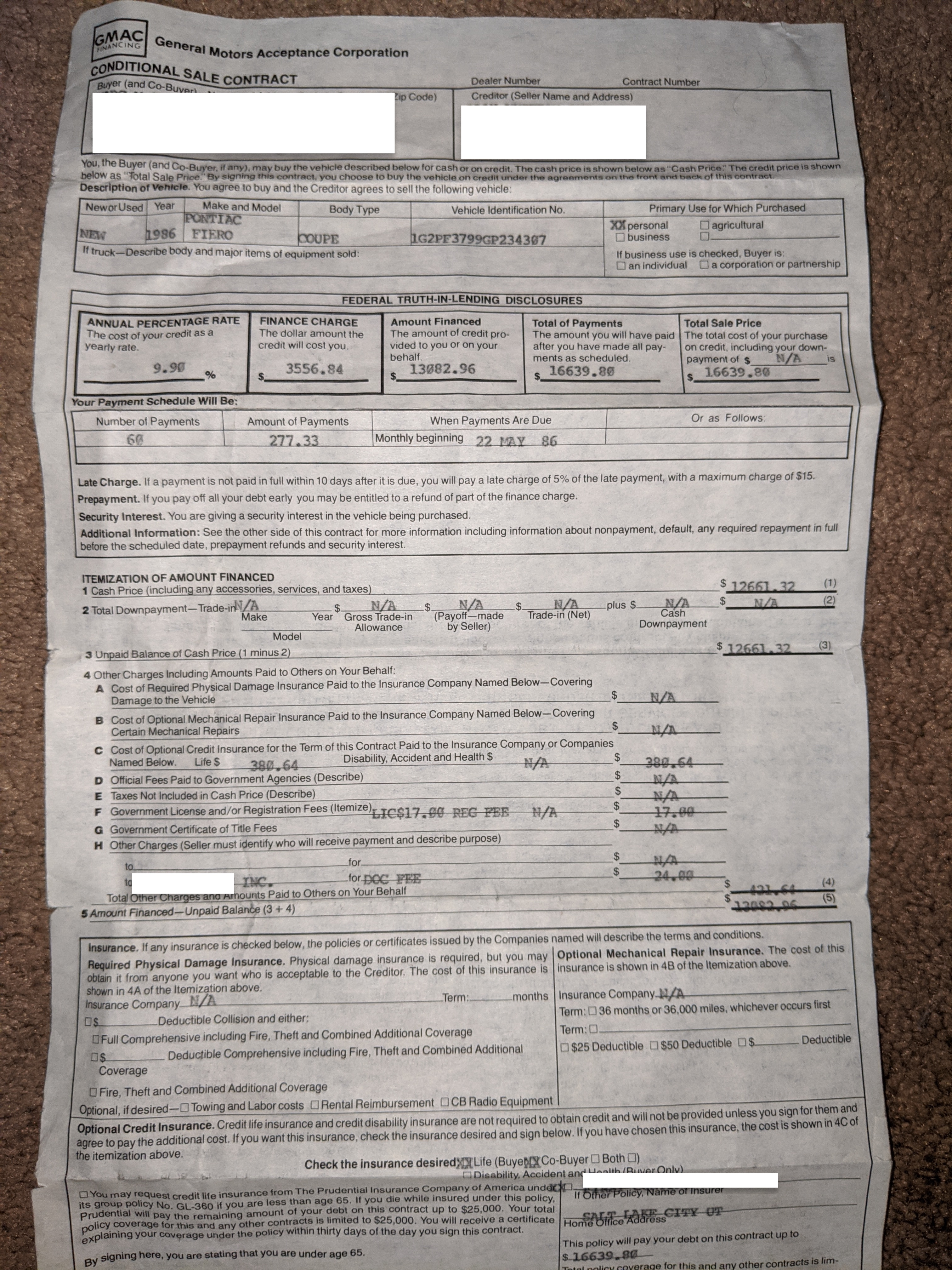
But just prior to receiving this image, PHS had sent me the info I'd requested on the junkyard car. That information included a full spec sheet for 1986 Pontiac Fieros:
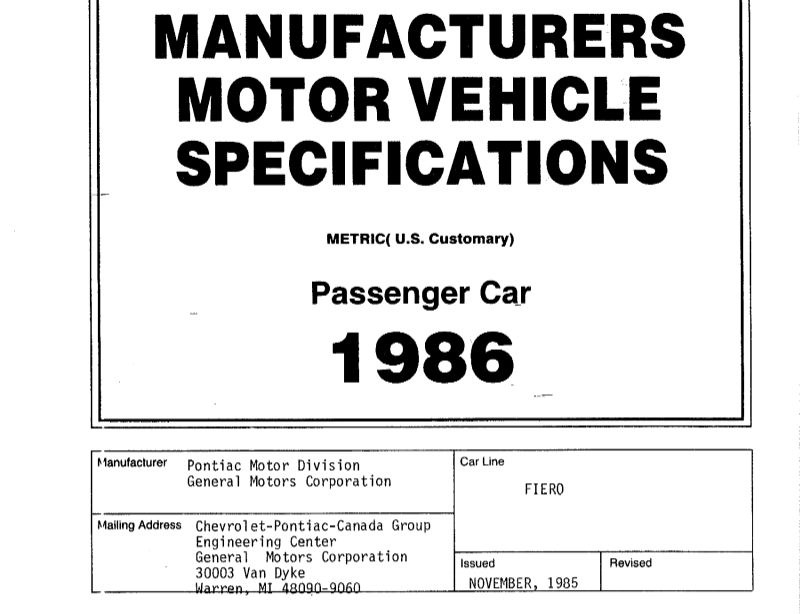
It also included the paint options for 1986:
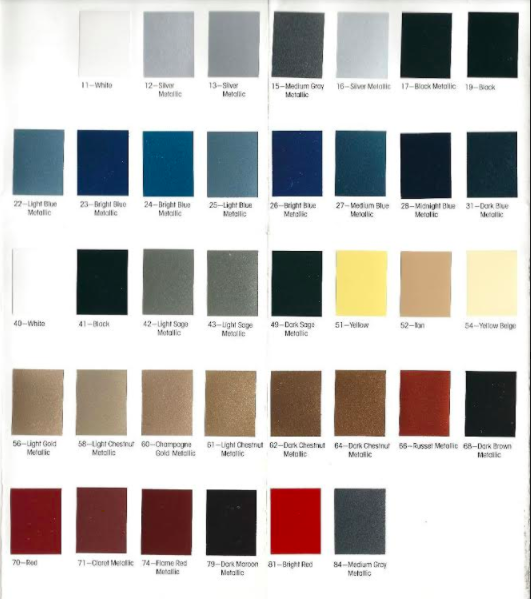
But the important bit of information—and the reason why I ordered these documents in the first place—was the dealer order sheet. Check it out:
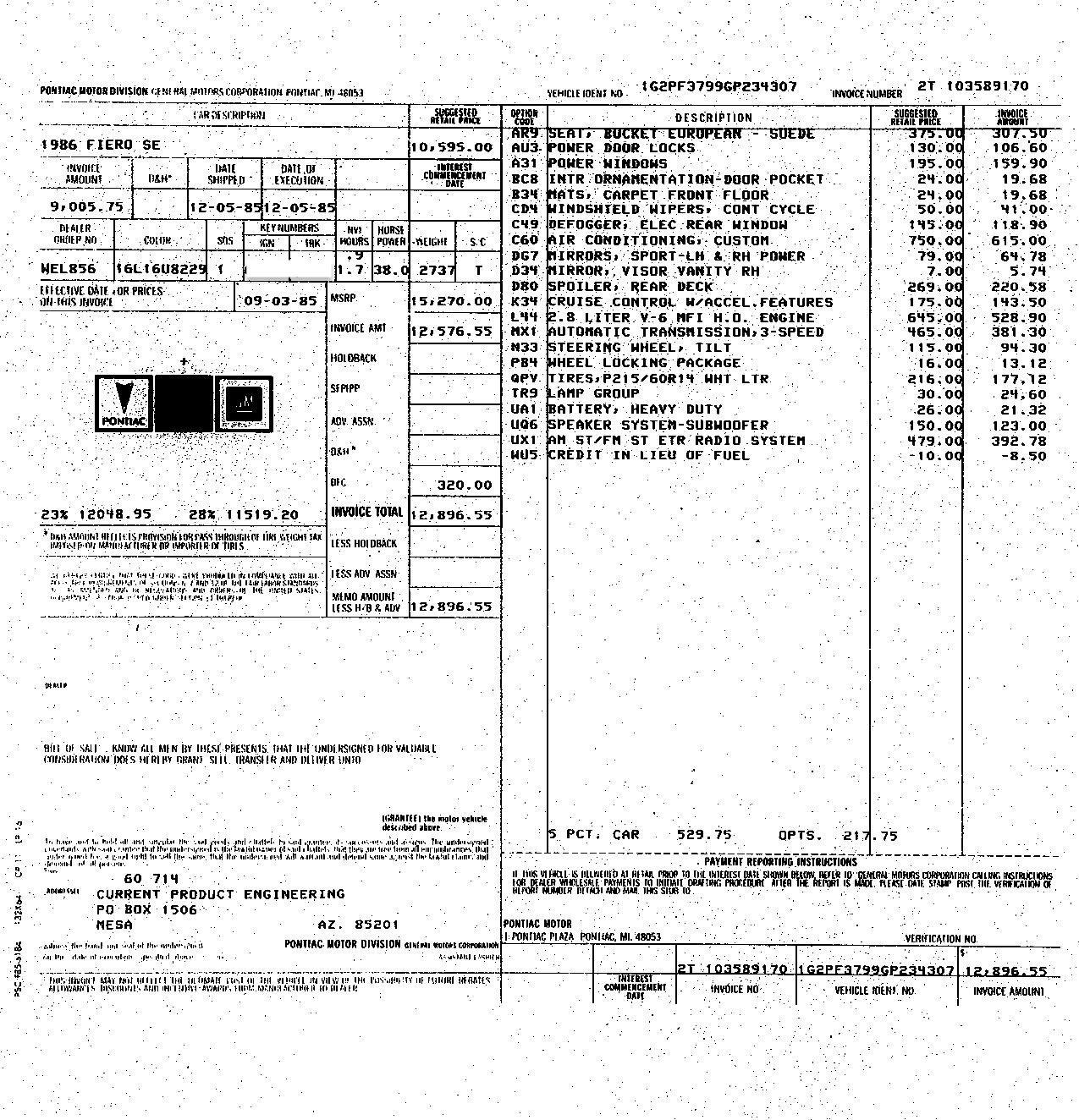
On the top left of the order sheet, you'll see the vehicle was apparently shipped out of the Pontiac, Michigan plant on December 5, 1985. On the right side of the page, you can see all of the car's options. And on the bottom left you'll see where the vehicle was delivered. Have a closer look:
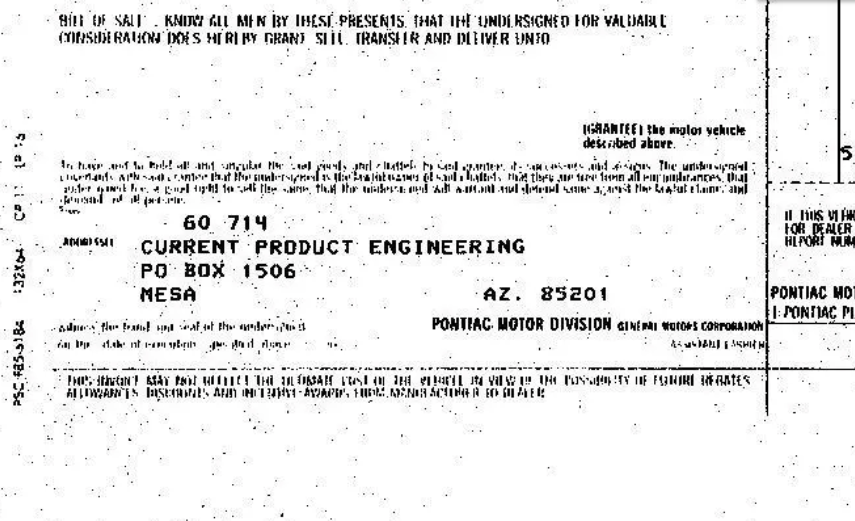
"Current Product Engineering," it reads, specifying a P.O. Box in Mesa, Arizona. This part of the dealer order sheet, a PHS representative told me over the phone, normally shows a dealership name. We see "Current Product Engineering" most likely because GM's internal departments were assigned dealer codes, so, as the PHS rep told me, this car almost certainly went to the Desert Proving Grounds.
We don't know exactly what it was doing out there. It's unlikely it was a test vehicle, as those probably got crushed. This Fiero may have been purchased by an individual working at the proving grounds. The PHS expert told me that on the right side of the order sheet the "5 PCT" indicates that someone likely used a GM five-percent discount to purchase the car. So maybe this was an executive's car or just a vehicle purchased by a DPG employee? Maybe the person listed on the bill of sale that Chantay found worked for GM? Or perhaps GM did own this 1986 Fiero SE, but didn't use it for testing? It's not exactly clear.
But in any case, this little two-door, mid-engine sports car was used, at least in some capacity, by one or multiple General Motors employees at the now-defunct Mesa Proving Ground, which was apparently a badass engineering development facility. Let's go down that rabbit hole.
The GM Desert Proving Ground In Mesa, Arizona
Also called the Mesa Proving Ground, GM's Desert Proving Ground opened up back in 1953, 16 years after two company engineers initially traveled to Arizona and set up a headquarters in downtown Phoenix to test GM vehicles and later World War II machines. The facility was to be used to do all sorts of thermal testing on GM's entire lineup of automobiles.
The 1953 opening of the facility in Mesa was a big deal, with legendary designer Harley J. Earl and VP of engineering Charles Chayne in attendance. There were demonstrations on opening day, including a rollover test conducted by the Fisher Body Division, and a tire blowout test conducted by two technicians at 70 mph.
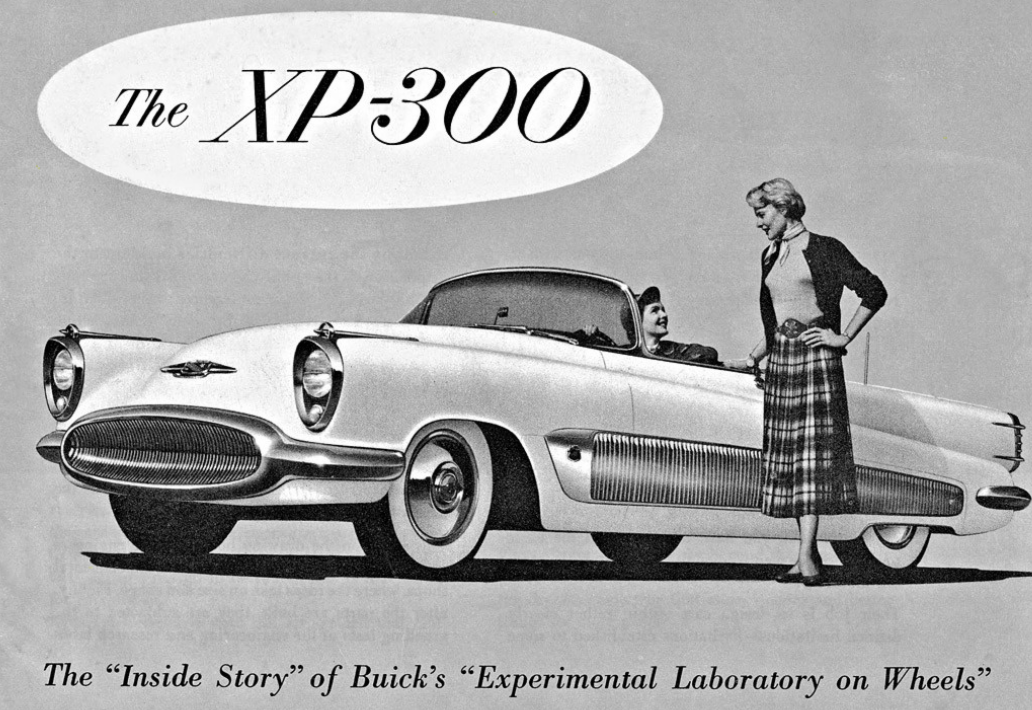
Plus, the incredible Buick XP-300 concept (see above), which shared quite a bit in common with the revolutionary and modern GM Le Sabre concept (the first vehicle with a wraparound windshield, and one that—like the XP-300, had an all-aluminum supercharged V8 under the hood, lots of aluminum body panels, and a fancy hydraulic system that worked various bits including a built-in jack system) was out in Mesa to commemorate the opening of the vast testing facility.
1953 was a big year for GM, and not just because of the Desert Proving Ground. Here's Chayne talking—in what has to be the driest briefing I've ever seen—about the construction of GM's new technical center in Warren. There's some good footage of the Desert Proving Ground, too:
Chayne, in a 1953 press release for the opening of the Desert Proving Ground, said testing of air conditioning systems—then fairly new in the auto world—was a major advantage of expanding GM's engineering facilities in the desert, declaring:
"One of the major continuing tests we will conduct on the desert ground will be of air conditioning units for our cars. The climate here is ideal for that purpose. These units already are in wide demand in this part of the country."
The press release goes on to describe the various types of testing that engineers could conduct at the facility, which was located 35 miles southeast of Phoenix and about 17 miles southeast of Mesa:
Installations at the desert ground include a five-mile circular track, with its outer lane banked to permit test cars to be driven at speeds in excess of those driven by car owners; a one and one-half mile engineering straightaway inside the track; a cement block shed without roof, adjacent to the track; an operations building which includes offices, garage and filling station, and a care-taker's house with living quarters for visiting engineers.
The track will be used for high and low speed testing, one of the main projects being the observation of engine and oil cooling systems at sustained high speeds. Acceleration and deceleration tests will be held on the straightaway.
Here's a bit more on that roofless shed and how it's used to check for vapor lock issues:
The roofless cement block shed, adjoining the track, will be used for the study of vapor lock in cars following high speed runs. Vapor lock is a condition in which heat vaporizes the gasoline in the carburetor or fuel line, or both, stalling the car until the vapor returns to its liquid state.
As you can see in the 2013 video above of a trucker driving around what was left of the five-mile oval, the Mesa Proving Ground has been decommissioned. The video below shows some of what was left as of 2017, with the video's description detailing that the land was being turned into residential space:
Me...leaving my home that was built on the Southern Section of the GM Proving Grounds on my dirt bike to explore the abandoned, undeveloped sections. So much history here. They will be building another big community on this spot and wanted to document it. I will be doing the Northern section...whats left of it anyway...soon.
Indeed, in GM's 2009 press release announcing the opening of the Yuma Proving Ground, the company discusses why the Desert Proving Ground shut down for good after 56 years:
GM sold the Mesa Proving Ground when residential and commercial building encroached on their heretofore rural area. As property values increased the value of the land the Proving Ground was sitting on became more valuable for development than for testing. GM's rapid move from road testing to lab testing to using math based tools enabled the testing needs to be met with a much more modest size facility and limited test roads.
Now that we've talked about the Desert Proving Ground, let's briefly descend into the Pontiac Fiero rabbit hole before getting back to Chantay and Phil's awesome junkyard find.
The Pontiac Fiero
The Pontiac Fiero is a sleek, mid-engine, rear-wheel-drive sports car built in an era when GM was known for making boxy, forgettable machines. The car was originally marketed to management as a cheap "commuter car," with emphasis on cheap.
As Paul Ingrassia and Joseph B. White wrote in their book Comeback: The Fall And Rise Of The American Automobile Industry, the idea of a two-seater Pontiac sports car had been bouncing around in engineers' minds since the late 1960s. Though old-timers weren't fans, as they worried it would steal Corvette sales. But then came an idea from the product planners:
It wasn't until 1978, however, that some young Pontiac planners hit on a strategy for bootlegging the dream car past the corporate guards dogs. Instead of a muscle car, the Pontiac Kids proposed a fuel-efficient, four-cylinder "commuter car" that just happened to have two seats. The corporate brass was intrigued. And when Pontiac engineers brought back a running prototype in less than six months, they bought it.
There was, however, a major condition. The whole project—from design to tooling up the plant—had to be finished for just $400 million. That was a fraction of what GM spent to bring a typical car to production.
$400 million! That's dirt cheap for a vehicle program, which is why engineers had to make some major compromises. The engine that the car launched with, for example, wasn't a nice aluminum V6. It was the weak, 92 horsepower corporate Iron Duke with a shallower oil pan to fit the Fiero's chassis. Plus, the body panels were plastic since "the dies to make plastic fenders and doors cost a small fraction of what it cost GM to make dies for metal body pieces."
Though the car launched to much excitement back in 1983, it suffered from quality problems, failed to offer basic features things like power steering, and had to be recalled due to engine fires. GM ultimately announced in March of 1988 that Fiero production would end later that year because of lack of demand, though some think it was shoddy engineering and penny-pinching that did the car in. By the time the car left the market, it had received a number of improvements, and become an awesome little car, as our Matt Brown wrote in December:
Despite its freshman debut as an overweight sports car with less horsepower than a 1984 Kawasaki Ninja, the Fiero...improved every year of its five-year production. The desperately needed [135 HP] V6 option was added in 1985, the fastback GT came a year later, and the 5-speed manual showed up in the middle of 1986. The 1988 models came with a new suspension design and vented disc brakes all around, giving the car handling and performance that better matched its sporty looks.
By the time the '88 GT and Formula trims came around, the Fiero was better in many metrics than the Ferrari 308 it was often compared to (and sometimes transformed into). Also, less likely to catch on fire. It was a nimble, fun, good looking sports car that really was different. It is a shame the car didn't make it a few more years to get the 3800 V6...
Despite its humble beginnings and early engineering and manufacturing flaws, the Fiero has developed a cult following, specifically because of its balanced mid-engine, rear-drive layout, which acts as a great base for suspension modification and engine swaps that together can get a Fiero closer to true giant-killer status. Plus, it's a mid-engine, rear-drive, manual sports car with pop-up headlights. That's cool any way you slice it, which is why it's not odd to see a Fiero among enthusiasts like Chantay and Phil.
What’s Going To Happen To This $400 Proving Grounds Fiero?
Chantay told me a bit about her plans for the Fiero, and how she decided to choose this specific vehicle. "We didn't really have our eyes on any one vehicle in particular," she wrote me. "We just needed a donor car, and the guy said he had several Fieros kicking around his yard. We had originally zeroed in on a teal 86 or 87, but when we realized that we wouldn't be able to steer it because it didn't have the keys, we switched to the silver one."
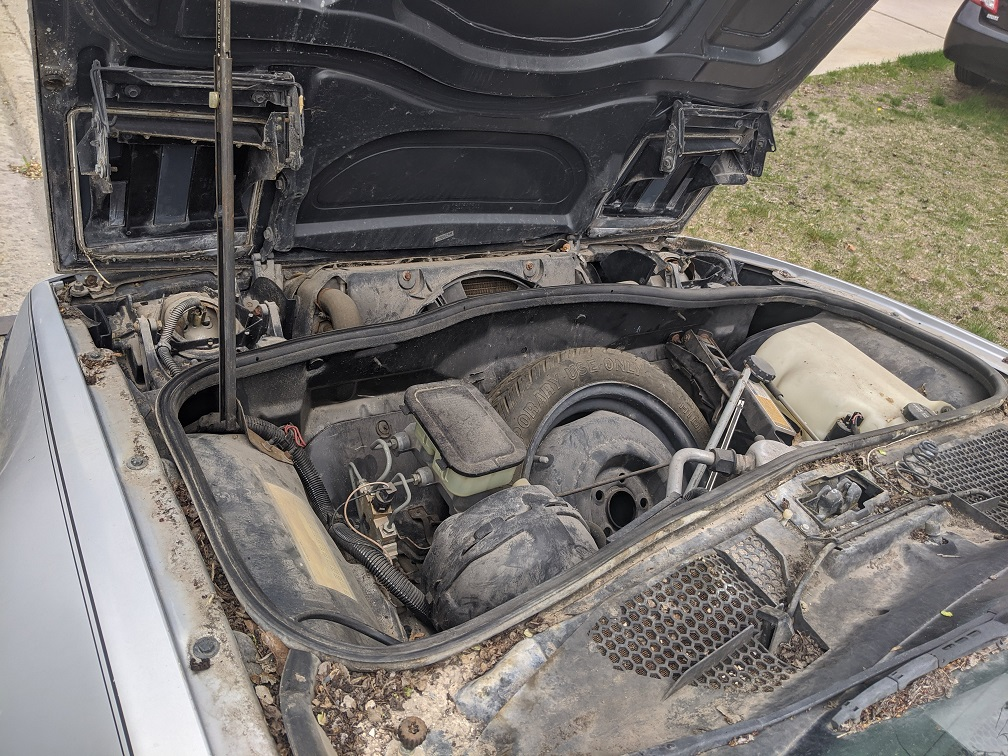
Apparently the car is in good shape. "We liked it because mechanically and body wise it's basically identical to my 85 GT, so we could scavenge more bits off of it." The owner of the junkyard used a forklift to move the car to the trailer, whose ramps Chantay and Phil pulled the $400 Fiero up with the help of a come-along. This, Chantay told me, was "a PAINFUL process considering that all four tires were completely dead and so far off the bead that we couldn't get them to hold a lick of air." (I can attest).
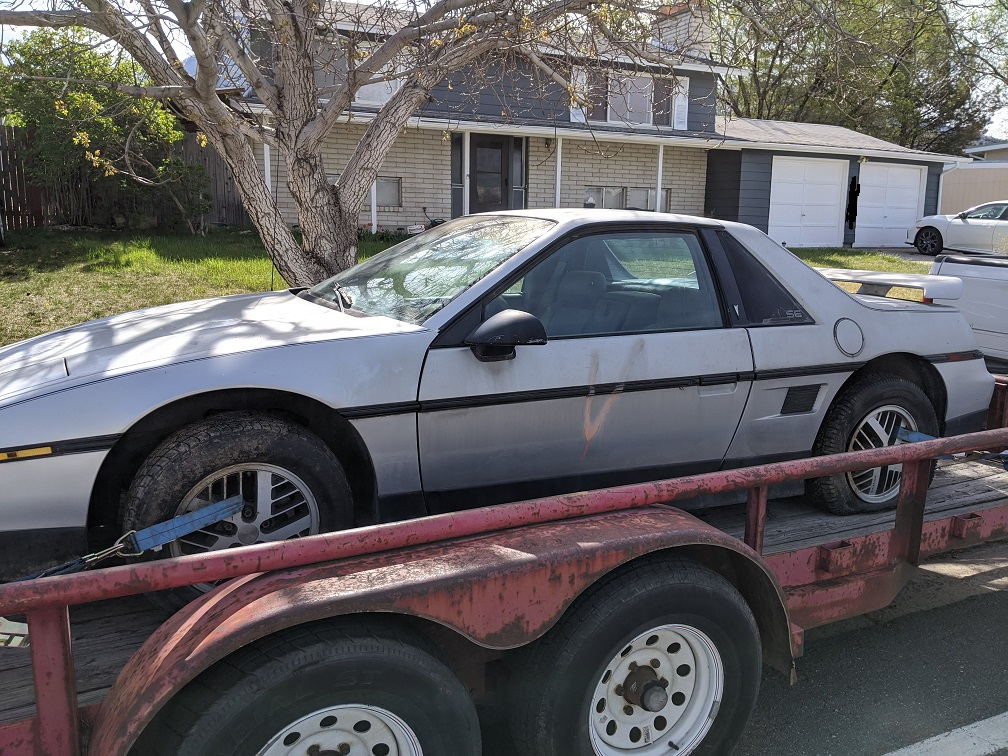
The car, she told me, is filthy, but fairly complete. "The only thing that I can spot it missing are the shift knob, the coolant bottle cap (mildly concerning), and one thumb screw for the passenger side deck lid vent," she wrote. "They optioned the hell out of this thing, power EVERYTHING, mirrors, doors, windows, it even has the GT aux gauge pod in the center stack."
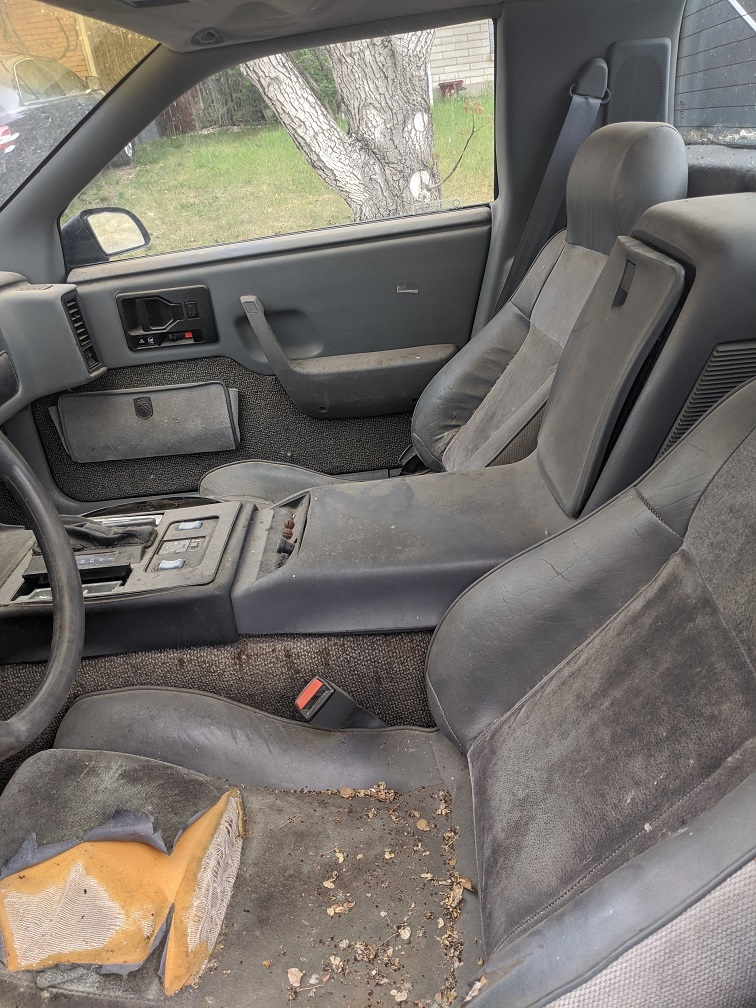
It's quite a cool automobile, which is why Chantay and Phil may not use this Fiero as a donor car after all. From Chantay:
The plan right now is to pull it off the trailer into the driveway and slap my Fiero's winter tires and wheels onto it so it'll roll better. Then we'll get a battery, fog the cylinders, check spark plugs/wires/basic tune up things, drain the tank and give it fresh gas and see if it'll start. The car is remarkably complete; all the ground effects are there, the side molding is there, it's got standard junkyard issues (interior and storage areas are gross, definitely needs to be cleaned), but it's in great shape and has just over 100,000 miles on the odometer. Given its history, I don't feel right being a vulture and yanking parts from it, especially considering how complete the car really is. I guess we'll be going back to Ogden for another donor. We definitely need a winch for the trailer and more property for storage! =)
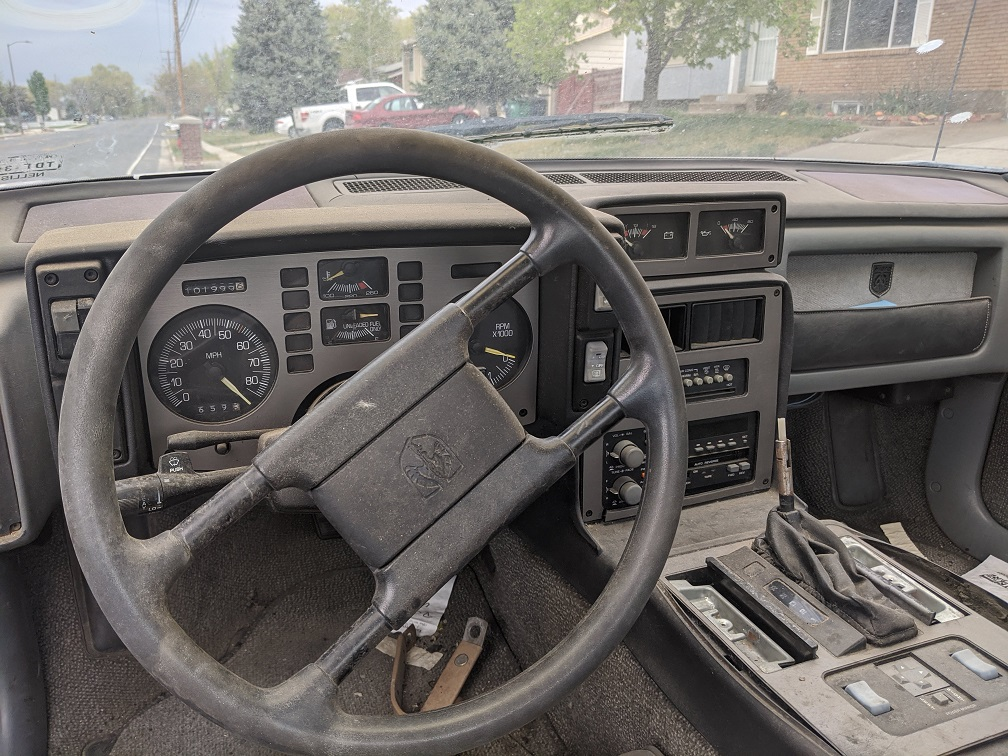
I think that's the right call. If this Fiero can be easily saved, then I'd mend it, especially given its interesting—but still a bit mysterious—history. Hopefully this thing runs and drives beautifully, though I do wonder why it was in the junkyard. I guess we'll find out soon enough.
